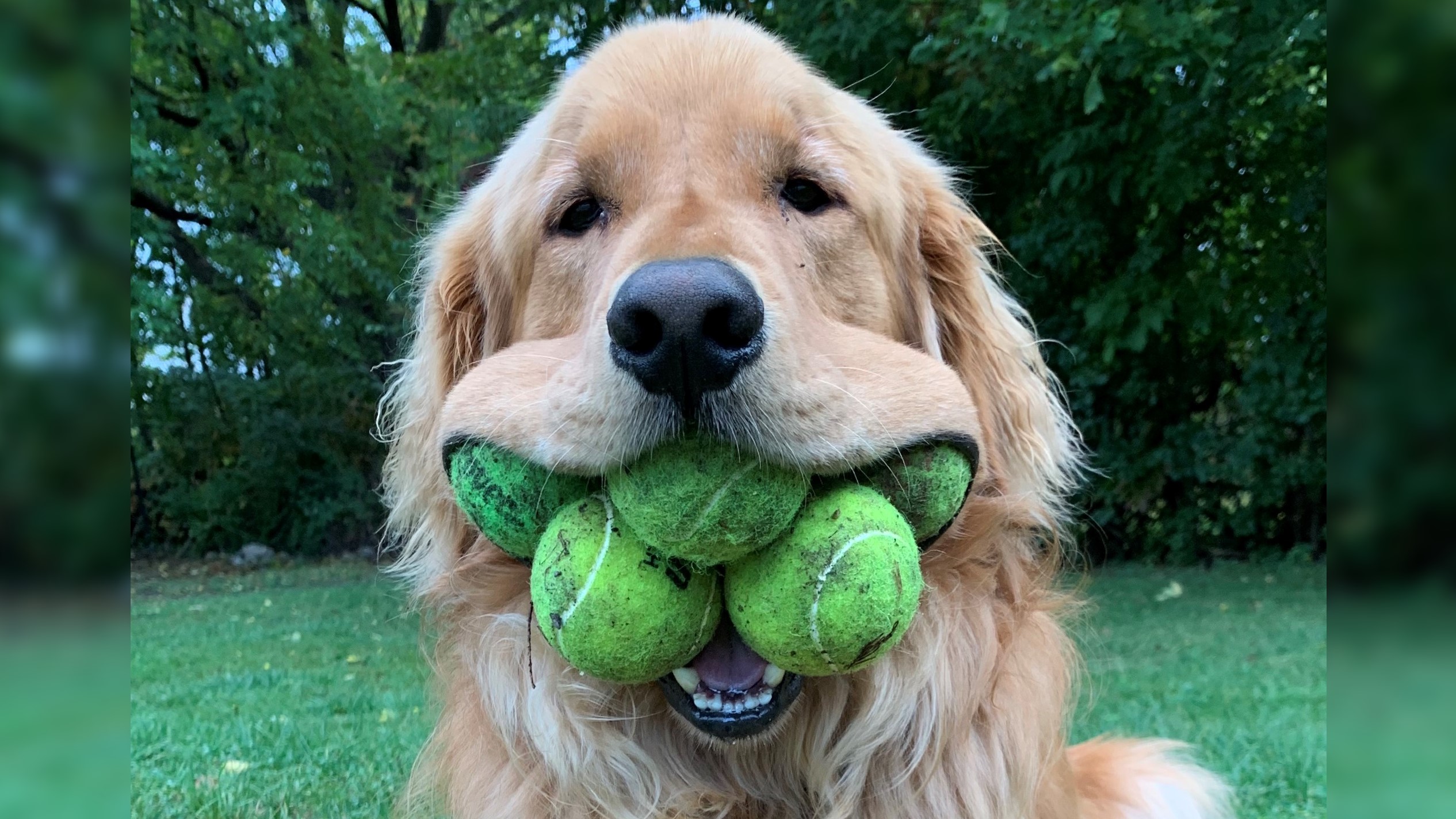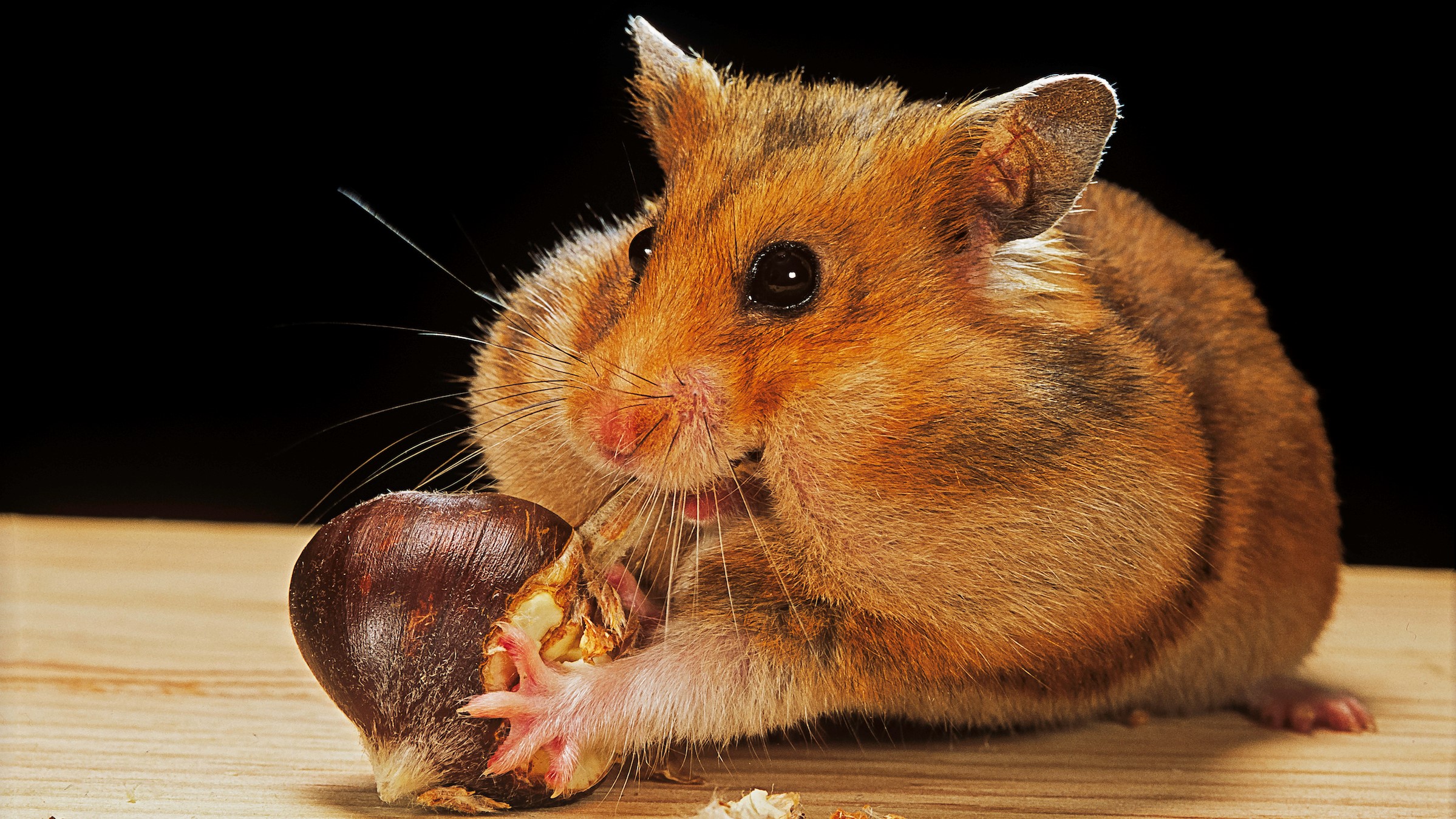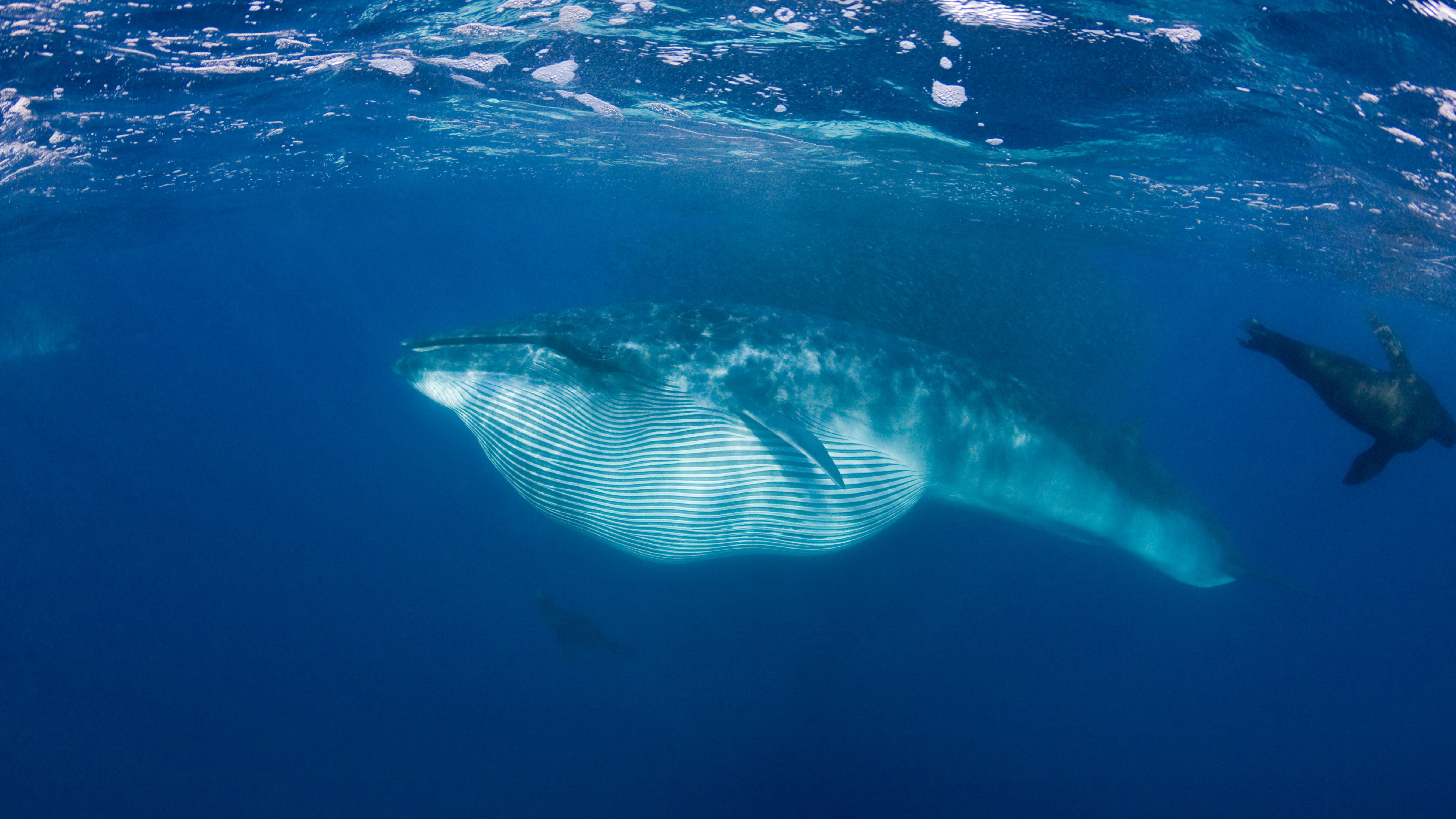
Which animal has the stretchiest mouth?
A dog with six tennis balls in its mouth is just the start.

A golden retriever named Finley Molloy enjoys picking up tennis balls so much, he can stretch his jaws and cheeks to fit six in his mouth at once, according to Guinness World Records. Finley is undoubtedly a good boy, but how does his achievement compare with other stretchy animal mouths?
In other words, which animal has the stretchiest mouth? It turns out there isn't a scientific consensus on this cheeky characteristic. However, there are certainly a few standout contenders.
Some animals, including many rodents and certain monkeys, including the mandrill, have expandable pouches in their cheeks to store food. Hamster cheeks are perhaps the best example, with pouches capable of holding up to 20% of the animal's entire body weight, according to Business Insider.
Snake mouths can stretch even further, as they can take on whole meals in a single, massive bite. For instance, a non-native Burmese python in Florida managed to stretch its mouth enough to swallow a white-tailed deer that was heavier than itself, Live Science reported in 2018. Snake jaws are connected to flexible ligaments rather than to their skulls, which extend to accommodate larger prey, Live Science previously reported. It's a neat trick, and snakes’ mouths may be more flexible than any other mouth on land. In water, however, things get even more stretchy.
Related: Why do dogs chew everything?

The largest animals on Earth also have some of the stretchiest mouths. Blue whales and fin whales — the largest and second-largest living animals, respectively — belong to a family of whales known as rorquals, according to the University of Michigan's Animal Diversity Web (ADW). These whales can stretch their mouths to engulf water containing whole groups of prey, such as krill or fish, in a single mouthful.
The easiest way for animals to catch prey suspended in water is to take the water in too, by expanding the space inside their mouths, Alexander Werth, a biology professor and whale researcher at Hampden-Sydney College in Virginia, told Live Science. "Whales do this on a remarkable scale. They pull in massive quantities of water so that they go from being a slim, sleek creature to something that looks like a tadpole with a little tail out the back."
Sign up for the Live Science daily newsletter now
Get the world’s most fascinating discoveries delivered straight to your inbox.

Rorquals have expandable grooves, called throat pleats, that extend all the way from their jaws down to their umbilicus (belly button) to help them hold water, according to Werth. Blue whales can potentially hold more than 26,000 gallons (100,000 liters) of water at a time, he said.
"If you can imagine a 1-liter [0.2 gal] bottle of water or soda, and then imagine 100,000 of those. It's just mind-boggling, it's gobsmacking how much water that is," Werth said. The volume of water these animals can hold increases with body length as a cube, rather than a square, and so longer whales can engulf disproportionately more water than shorter whales, according to Werth. "I would say that blue whales and large fin whales not only engulf the most water [of any living animal], but they probably have the stretchiest mouths."
Werth compared rorqual feeding with a pelican's pouch — another animal mouth deserving of accolades. Pelicans have a stretchy piece of skin under their bill that they use to scoop up fish from the water. Brown pelicans (Pelecanus occidentalis) can hold up to 3 gal (11 liters) of water in their pouches, according to ADW. That's three times more volume than pelicans can hold in their stomachs.
A pelican's pouch is flexible enough to cover some of the bird's own body when it stretches. This stretch looks so bizarre, there's a social media meme claiming that pelicans can take their spines out of their mouths to cool down. In reality, their necks are just pushing up against the loose skin from their pouches, according to AFP Fact Check.
Related: How do lizards cool off?
Pelican pouches inspired the name of the final animal in this mystery — the pelican eel or gulper eel (Eurypharynx pelecanoides). Pelican eels can almost be seen as a combination of everything that has come so far, with snake-like bodies, whale-like feeding techniques and pouch-like skin capable of expanding in just about every direction.
Pelican eels live deep in the ocean and have been recorded 9,800 feet (3,000 meters) below the surface, according to the Australian Museum. In recent years, deep-sea researchers have captured some truly spectacular videos of pelican eel heads expanding to many times their normal size.
No official estimates exist, but the below video appears to show that in one instance, a pelican eel expanded its mouth to more than five times its original size.
"It's very interesting because the mouth and the head are very flexible and inflatable, and sometimes they look like balloons flapping around," David Smith, a research associate and eel specialist at the Smithsonian National Museum of Natural History in Washington, D.C., told Live Science.
Pelican eels likely suck in their prey with huge mouthfuls of water, but little is known about their everyday lives, according to Smith. "We don't know much about the behavior of these things, their social interaction, their mating behavior, we just don't know anything about that, so we're kind of flying blind here."
Smith added that there is a lot we don't understand about the ocean in general, and we still don't know all of the species that live in it. So, consider the pelican eel a placeholder for the stretchiest animal mouth while scientists continue to study and catalog life on Earth.
Originally published on Live Science.

Patrick Pester is the trending news writer at Live Science. His work has appeared on other science websites, such as BBC Science Focus and Scientific American. Patrick retrained as a journalist after spending his early career working in zoos and wildlife conservation. He was awarded the Master's Excellence Scholarship to study at Cardiff University where he completed a master's degree in international journalism. He also has a second master's degree in biodiversity, evolution and conservation in action from Middlesex University London. When he isn't writing news, Patrick investigates the sale of human remains.









